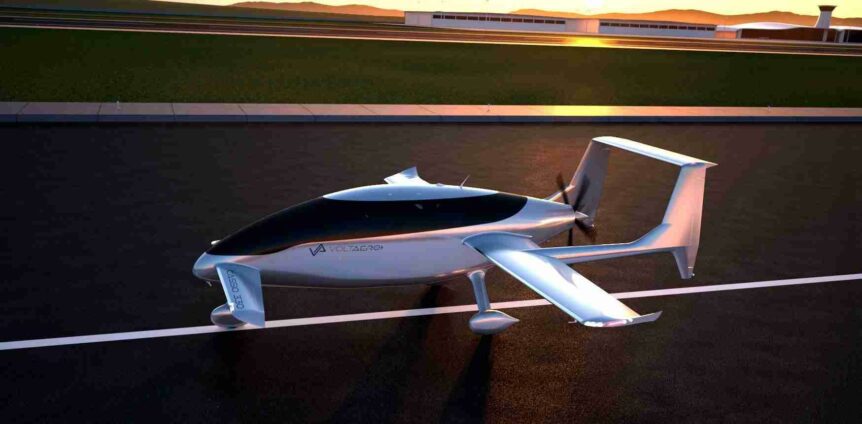A year ago, VoltAero, a French company grown out of Airbus’ early efforts at creating electric aircraft, was test flying a modified Cessna 337 Skymaster. They have made progress from the three motor craft to a range of single-propeller machines with much higher performance – the Cassio. Their pre-prototype mockup has been making the air show and exhibition rounds, moving steadily westward.
One Year Ago
VoltAero was still promoting their Skymaster derivative, but had been planning on bringing out the first of three similar three-surface aircraft. Dropping the dual Safran 45kilowatt motors of that testbed, the firm went to a single Kawasaki-powered hybrid power system that drives a single five-blade pusher propeller.
Jean Botti, former Airbus executive and now CEO of VoltAero, explained the move as a way to lower noise – a significant need for modern aircraft often operating in urban environments.
The hybrid system enables the internal combustion (thermal) engine to recharge batteries in flight and act as a backup powerplant if the electric drive unit fails. This built-in redundancy could be a big selling point for hybrid-electric aircraft.
The 330 will be equipped with a Kawasaki four-cylinder Ninja H2 motorcycle engine. Larger variants will have a six-cylinder engine and carry up to 12 passengers. The large cabin allows a wide range of configurations, as shown in our entry for June 31, 2023. You can also review the specifications and cockpit layouts in VoltAero’s own product brochure.
Moving Westward
VoltAero started taking its prototype Cassio 330 to air shows, with Paris early on, followed by England’s Farnborough Air Show, and America’s AirVenture at Oshkosh, Wisconsin. Moving on to other venues, the Cassio wowed visitors at the National Business Aviation Association Business Aviation Convention & Exhibition (NBAA-BACE) in Las Vegas, Nevada.
What and When
As noted above, the Kawasaki engine makes up half the power train for each model of the Cassio. Weighing only 165 pounds and producing 150 kilowatts (201 horsepower) the engine is a step up from traditional aircraft engines. Traditionally, light aircraft engines weighed about two pounds per horsepower, limiting payloads and the ability to carry fuel for greater range. The internal-combustion element of Cassio’s power train ups the power-to-weight ratio considerably, and even with a generator to power the Safran motor, may retain an edge in that respect.
Jean Botti was looking for simplicity of operation, noting, “The [Private Pilot License operator] of today can perfectly fly this plane. From a certification standpoint, we have tried to simplify as much as we can to be able to have something that is not considered multiple-engine.”
Aviation Week explains Cassio’s operation is a great deal like that of a plug-in hybrid automobile. “The aircraft will be entirely battery-powered on flights of less than 150 km (93 mi.). For longer flights, its internal combustion engine will recharge the aircraft’s batteries to extend its range and serve as a backup in case of problems with the electric propulsion system. Safran is supplying the electric motors and Electric Power Systems is providing the battery system for the Cassio 330.”
The utility and probable safe operation of VoltAero’s Cassios should guarantee them a place in enough different operational categories that they may become fairly common in the uncommon skies of tomorrow.

